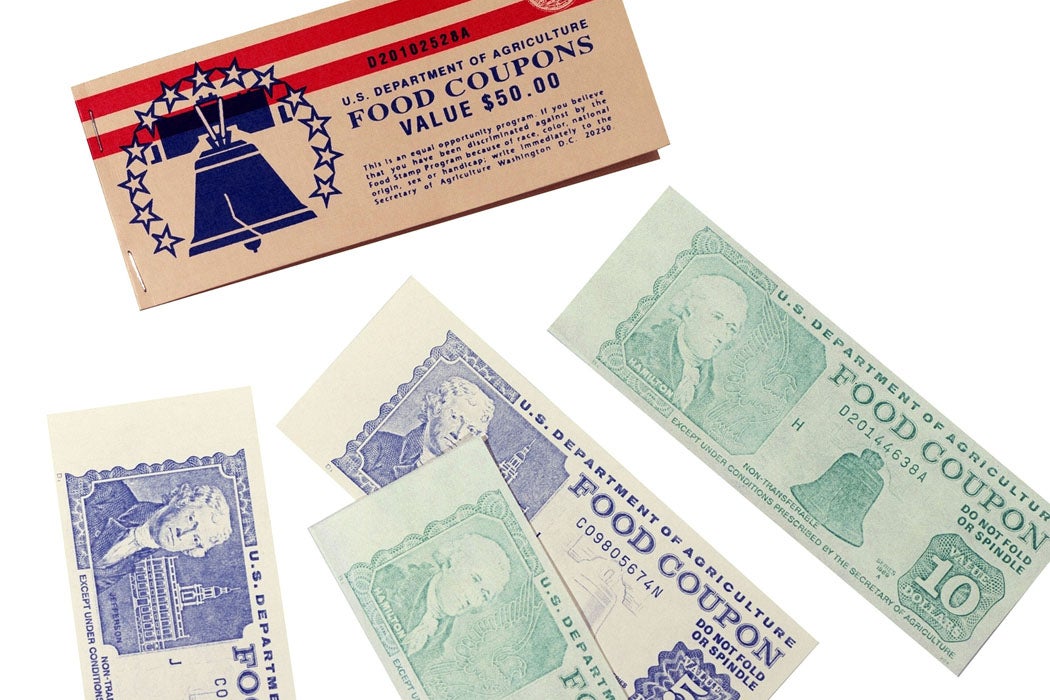When the Trump administration recently suggested that food stamp allotments be distributed via baskets of goods, they were actually hearkening back to the origin of the program. Food stamps, now known as the Supplemental Nutrition Assistance Program (SNAP), as the benefits are distributed electronically, began much the way the Trump administration proposal envisions.
While in the popular imagination food stamps are a response to the urban poor, its roots are truly in farm country. According to economics professor Maurice MacDonald, the history of food stamps goes back to the Great Depression. The goal in the program’s early years wasn’t necessarily to feed America’s poor. The idea was to buttress the price of food after the decline in crop prices had created a crisis in rural America. Support for the program came both from farmers and the poor in isolated pockets of America, particularly the Mississippi Delta and Appalachia.
Agricultural commodities, in the form of potatoes, cheese, and other items, were distributed via lines for which recipients stood in line, in many cases adding to the stigmatizing of poverty. As World War II generated massive markets for American farmers, the program was curtailed. It re-emerged after the war as American farmers created surpluses which were distributed to the hungry in Europe recovering from the conflict.
Soon after the war, as food aid from American farmers to Europe was increased, some argued that poor people in the United States should also benefit.
Commodity distribution continued throughout the Eisenhower Administration. But when John Kennedy campaigned in poor, rural West Virginia during the 1960 primary season, he saw firsthand problems with the program as it failed to directly meet the monthly budgeting needs of recipients. One concern was the food distributed was based upon farm surpluses, without regard to the nutritional needs of the recipients. After he was elected, the Kennedy Administration implemented food stamp pilot projects around the nation. For example, a mother with three kids was granted $64 per month for stamps she could redeem at grocery stores.
The Food Stamp Act of 1964 expanded the program. Much of its support came from farm state senators, including George McGovern, a South Dakota Democrat, and Robert Dole, a Republican from Kansas. Then-Senator Robert Kennedy took highly-publicized tours of the Mississippi Delta to shed light on the plight of America’s hungry. In 1968, a study titled Hunger USA generated public concern.
The biggest expansion in the food stamps program came during the Nixon administration. In his first message to Congress, Nixon argued that he was determined “to put an end to hunger in America for all time.” By 1971, commodity distribution was largely abandoned in favor of food stamps, which allowed the poor themselves to make decisions about the food they purchased. By the end of Nixon’s term, the program had expanded. But media accounts of college students relying on the subsidies to feed themselves and other accounts of apparent abuses emerged. In 1974, the program was expanded to all the counties in the United States and the number of recipients increased as regulations were relaxed and a recession pushed more and more breadwinners into poverty.
Since then, the program continued to expand in the aftermath of the 2008 recession. Many liberals have argued that the program has emerged as a bulwark of the social safety net, sparing millions of Americans from hunger, while many conservatives have argued that it saps initiative.
While the evolution of food stamps developed along the lines of giving recipients more choice in their food budgets, the Trump Administration is signaling that it believes that Uncle Sam can provide better and more economical nutritional choice for America’s poor, taking a step back to the program’s origins.







